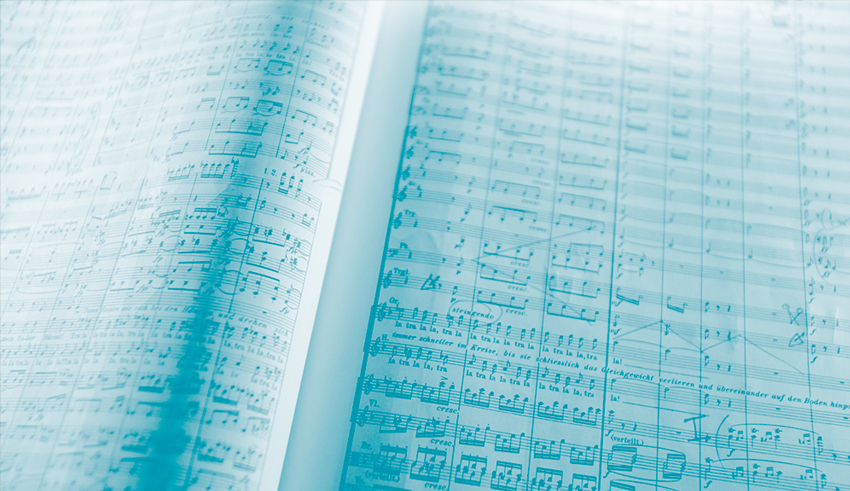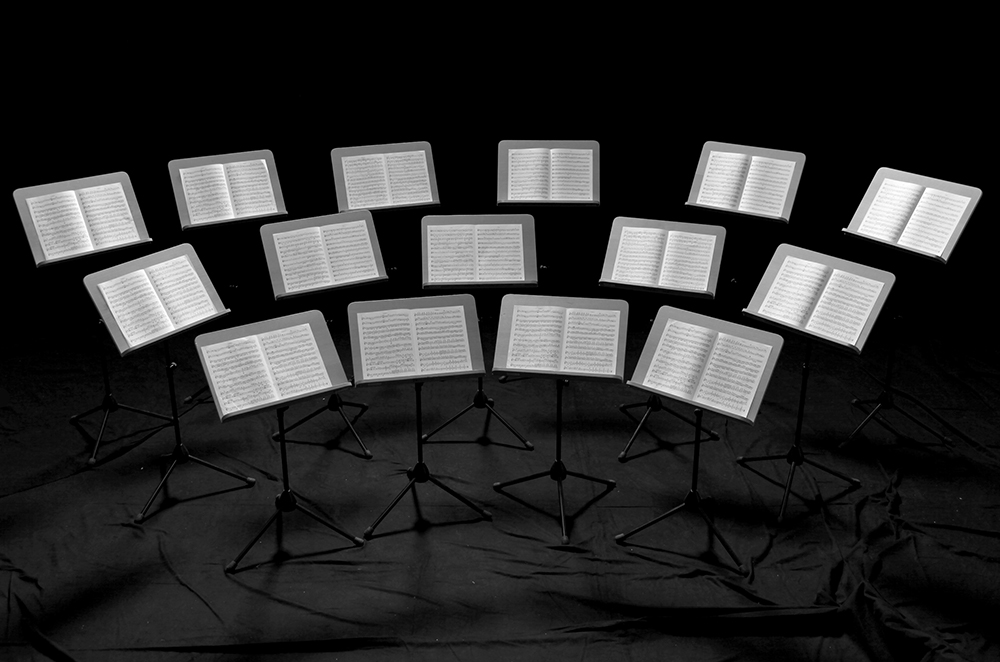On a Theory of Musical Notation
This winter semester, an interdisciplinary lecture series with cultural studies specialists, musicologists, philosophers, composers, and musicians will focus on the phenomenon of musical notation.

Fleeting sounds and permanent inscriptions
It is well known how, in order to prevent the stream of music—which ceases to exist the very instant it is heard—from flowing inexorably into the sea of oblivion, many cultures have developed techniques by which to nail down ephemeral musical sounds: the history of musical notation contains numerous systems that made it possible to archive and pass on musical knowledge even across great distances and periods of time. But is musical notation, as “written-down sound”, limited to the role of a mere medium of storage and communication?
Writing as “notated speech”?
A look at current debates on writing and writtenness would suggest that one should draw a somewhat wider theoretical arc in order to admit other perspectives to the picture: the assumption so frequently used as a common basis for discussion, made with explicit reference to Ferdinand de Saussure and implicit reference to Plato’s critique of writing, is that writing is no more (and no less) than “written-down language”—but this assumption has become quite brittle in the interdisciplinary discussion of recent years. So instead, an increasingly central figure of thought in current research on writing is the idea that writing has aspects and opens up possibilities that prove to be independent of—and can, in a sense, even exceed—spoken language. One can, for example, add together large numbers quite easily with the help of writing; one can manipulate written language by emphasising it via highlighting, strikethroughs, additions, and rearrangements; and one can also effect simultaneity and consecutiveness in a musical score via corresponding spatial arrangement—all these operations necessitating, of course, writing, writtenness, script.

Calling for a Shift in Perspective
Making the shift in perspectives described above bear fruit in terms of musical notation is one of the objectives of this lecture series—to be achieved by showing that musical notation is by no means limited to being simply “written-down sound”. A particularly fertile emphasis will be on fundamental aspects of writing-specific materiality, the explorative and cognitive significance of sketching and notating, performative phenomena that inhabit systems of musical notations, and the aesthetic dimension of musical notation as it is visually perceived. Even if these aspects are not traditional focuses of thought about musical notation, they all prove to be constituent phenomena thereof.
On the Lecture Series
The lecture series Writing Music. Zu einer Theorie der musikalischen Schrift [On a Theory of Musical Notation], which will be eligible for credit for several degree programmes as a special musicology lecture, is intended to help initiate a new focus of work and research at the Department of Musicology and Performance Studies.
Lectures by Jan Assmann (Heidelberg/Konstanz), Sybille Krämer (Berlin), Manfred Hermann Schmid (Tübingen), Birgit Mersmann (Cologne), and Christian Grüny (Darmstadt) will take on the phenomenon of writing from standpoints including cultural studies, philosophy, music history, art history, and music aesthetics.
Historical and contemporary musical notation systems will subsequently be examined in terms of their writing-specific “idiosyncratic sensuous quality”: Max Haas (Basel/Zurich) will speak on several medieval forms of notation; Katelijne Schiltz (Regensburg) will reflect on a genuinely writing-based phenomenon in light of the “riddle compositions” of the Renaissance; Silke Leopold (Heidelberg) will examine notations in the experimental era of the 17th century; and Dörte Schmidt (Berlin) will analyse 20th-century phenomena.
Materiality and performativity—aspects that Federico Celestini (Innsbruck) and Simon Obert (Basel) will discuss in their lectures—represent equally fundamental and specific dimensions of musical notation such as iconicity and operativity, upon which Matteo Nanni (Gießen) and Nikolaus Urbanek (Vienna) will in turn shed light.
A panel discussion with contemporary music performers on the question of the (un-)playability of various forms of musical notations, as well as a second panel discussion led by Bernhard Günther in which the composers Iris ter Schiphorst, Karlheinz Essl, Johannes Kreidler, and Johannes Maria Staud have agreed to participate, will round out this set of lectures with a focus on music of the present.
This lecture series of the mdw’s Department of Musicology and Performance Studies takes places Thursdays (with the exception of 11 October) at 7:00 pm in the Festsaal at Seilerstätte 26 (1010 Vienna). Admission is free.
- Further information at: www.mdw.ac.at/imi/writingmusic
- Please address inquiries to: urbanek@mdw.ac.at
- The video recordings of all lectures are available on demand in our media centre.

